Experiments
Blue Jay Emetic Unit
As defined by biologist Lincoln Brower, a "blue jay emetic unit" is the amount of cardiac glycosides (a type of poison found in plants such as milkweeds) that will make one blue jay vomit. Brower determined the exact amount by putting cardiac glycosides into gelatin capsules which he force-fed to blue jays.The point of this was that various butterflies ate milkweeds and then became poisonous to the blue jays which, in turn, ate them. Knowing the exact amount of poison needed to make a blue jay vomit allowed Brower to rank each butterfly by its number of blue jay emetic units:
Source: Brower LP (Feb 1969). "Ecological Chemistry." Scientific American 220(2): 22-29.
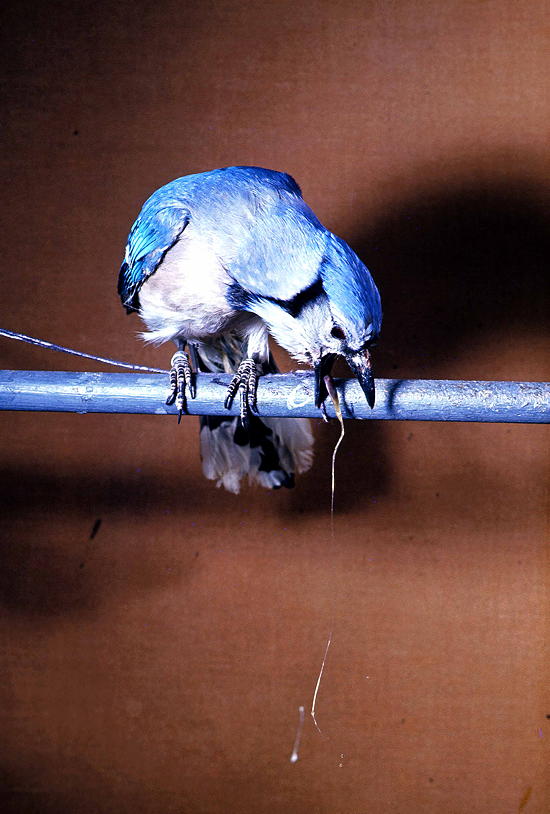
"barfing blue jay" (picture by Lincoln Brower. Source: ScienceFriday.com)
Posted By: Alex - Wed Oct 03, 2018 -
Comments (3)
Category: Nature, Science, Experiments
Does seltzer water help plants grow?
In 1980, Canfield's natural seltzer launched a campaign to promote its product as being great for watering house plants. It printed on its labels: "We recommend our natural seltzer for house plants."Could there have been any truth to this claim? Is seltzer water actually good for plants? Well, the only vaguely scientific study I can find addressing this claim (after, admittedly, only a brief search) was a student project conducted at the University of Colorado Boulder in 2002. The student researchers concluded, "Plants given carbonated water not only grew faster but also developed a healthier shade of green in comparison to plants given tap water."
So, maybe Canfield's was onto something. However, if you're thinking of treating your plants to some seltzer water, I imagine you'd want to use water at room temperature, not refrigerated. Cold water might shock their systems.

Marysville Journal-Tribune - June 9, 1980

Owensboro Messenger-Inquirer - May 19, 1980
Posted By: Alex - Thu Jul 19, 2018 -
Comments (12)
Category: Nature, Science, Environmentalism and Ecology, Experiments, 1980s
Dentists smell fear
Recent research reveals that dentists can not only smell fear, but that when they do their job performance significantly declines. From New Scientist:Next, examiners graded the dental students as they carried out treatments on mannequins dressed in the donated T-shirts. The students scored significantly worse when the mannequins were wearing T-shirts from stressful contexts. Mistakes included being more likely to damage teeth next to the ones they were working on.
So, if your fear causes your dentist to start making more mistakes, I assume that will only increase your fear, causing your dentist to make even more mistakes, leading to a downward-spiraling cycle of terror.
The academic study is here.

Posted By: Alex - Tue Jun 05, 2018 -
Comments (4)
Category: Experiments, Psychology, Teeth
Dr. Blatz’s Trick Chair of Terror
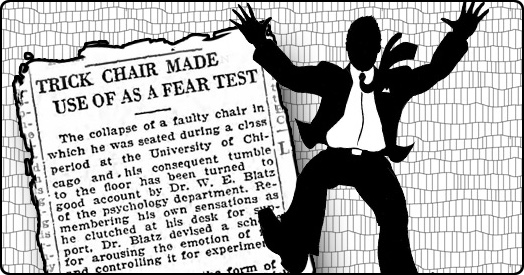
While he was a grad student at the University of Chicago in the early 1920s, William Blatz was sitting in class one day, leaning back in his chair, when suddenly the chair collapsed beneath him, sending him sprawling backwards, crying out in fright. The experience was unsettling, but it gave him an idea for an unusual psychology experiment.
He designed a trick chair that would collapse backwards without warning when he flipped an electric switch. The chair was padded, so its occupant wouldn't get hurt. But Blatz figured that the sensation of abruptly, unexpectedly falling backwards would provoke a strong, measurable reaction in subjects. This would allow him to study the physiology of fear under controlled, repeatable conditions. He performed his experiment on a series of unsuspecting victims.
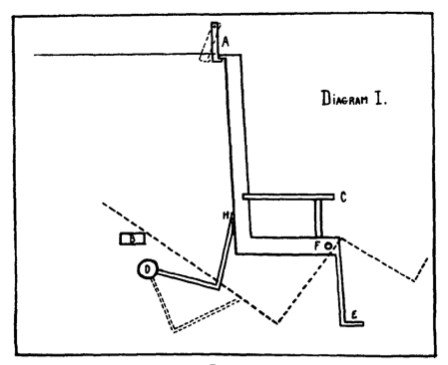
Diagram of Blatz's trick chair.
When the hook (A) at the top was released, the chair plunged backwards.
More in extended >>
Posted By: Alex - Tue Dec 26, 2017 -
Comments (2)
Category: Experiments, Psychology, 1920s
Personal body space
As the population increases, we will all have to learn to accept strangers on the street standing very close to us.According to recently collected facts, there were three basic reactions: (1) He-she slowly backed away as the interviewer got closer, (2) He-she struck a defensive pose such as folding arms, looking down, or even turning to one side, and (3) No reaction, though most people do have some kind of reaction...
According to Mark, most people have this "wall" about 18 inches around them that excludes all people from entering. What the interviewers were doing when they moved closer to the person was violating personal body space, causing them to react.
Steve says, "It's a shame this happens because as our world gets more and more crowded, we'll have to get closer together. Let's all start getting closer together and break down that wall."

Terre Haute Tribune - Mar 31, 1974
Posted By: Alex - Mon Dec 18, 2017 -
Comments (5)
Category: Experiments, Psychology, 1970s
Bikini Experiment
So why was Simone Harris standing on a Sydney street in a bikini? Was this a publicity stunt? Was she a psychologist conducting research? A performance artist being weird? I haven't been able to find answers anywhere.
Racine Journal Times - June 17, 1970
Posted By: Alex - Wed Nov 15, 2017 -
Comments (2)
Category: Experiments, Psychology, 1970s
Air Raid Noise Experiment
These pictures in the Google Arts picture archive don't come with any explanatory text, except that they're from an "Air Raid Noise Experiment" conducted in Nuneaton in 1941. But I suspect that the experiment was part of a series of psychological experiments conducted in the UK in 1941 that attempted to "harden Britons to bomb shock." The idea was to expose people to the sounds of air raid sirens and battle sounds so that they would lose their fear of them. As described in the news clipping below: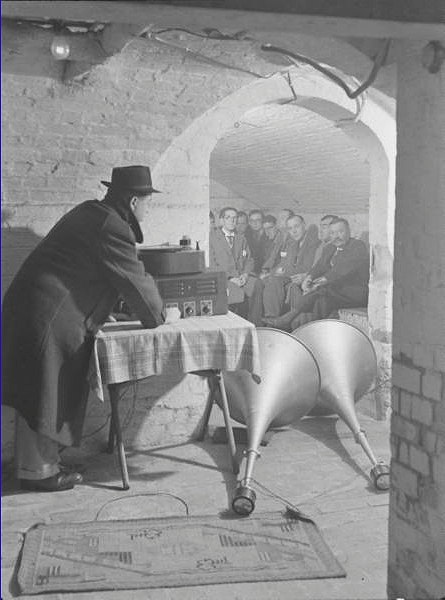
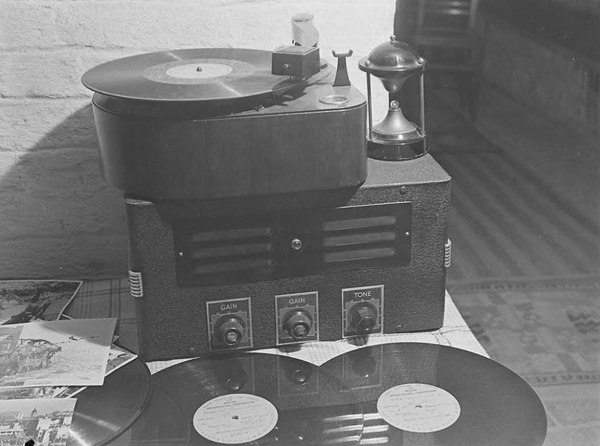
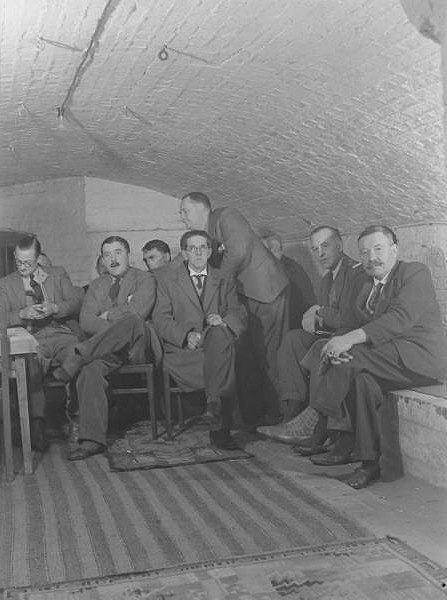
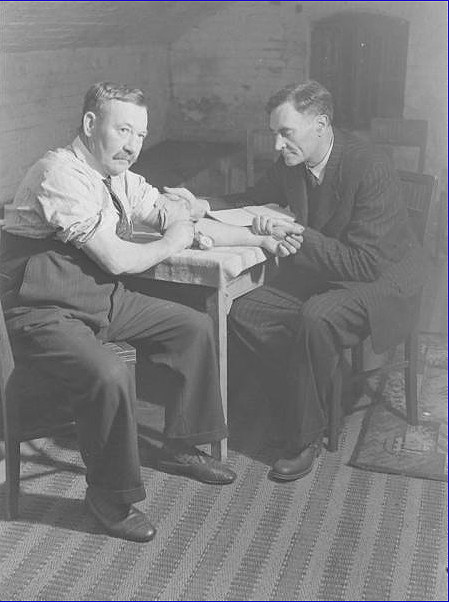

The Greenfield Daily Reporter - Nov 28 1941
I've been aware of these experiments for a while. I previously posted something about them back in 2009. But I just came across these photos and realized they must be from one of these experiments.
Posted By: Alex - Thu Nov 02, 2017 -
Comments (2)
Category: Noises and Other Public Disturbances of the Peace, War, Experiments, Psychology, 1940s
Effect of Gamma Rays on Marigolds
Paul Zindel's play The Effect of Gamma Rays on Man-in-the-Moon Marigolds won the Pulitzer Prize for Drama in 1971. It inspired Paul Newman to make a film of the same name the next year.And in 1974 it inspired 13-year-old Danny Kleiner of Philadelphia to wonder what the effect of gamma rays on marigolds would be. So he made that his school science project. He used cobalt radiation to produce the gamma rays. Unfortunately, I don't know what the results of his experiment were.
I haven't read or seen Zindel's play so I don't know if a similar experiment is featured in the book. I'm guessing it must be. I wonder how many high school students were inspired by Zindel's play to do similar experiments?

Danny Kleiner examining his gamma-ray-exposed marigolds
via Temple University Library
Posted By: Alex - Sat Oct 14, 2017 -
Comments (4)
Category: Theater and Stage, Experiments, 1970s
Temporarily Blind
May 1974: Three students at Northeast High School in Philadelphia participated in a medical experiment in which for five days they experienced what it was like to be blind.I'm guessing this kind of experiment would never be allowed nowadays in a high school.
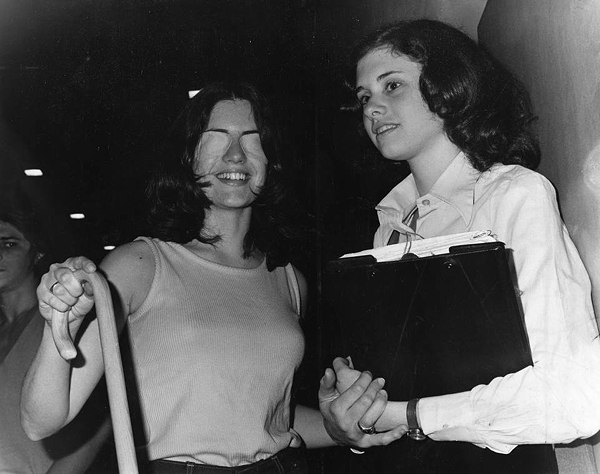
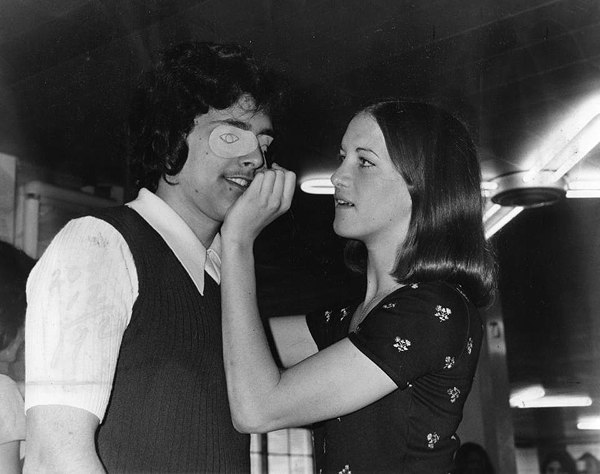
Source: Temple University digital collections (image one, image two)
Posted By: Alex - Mon Oct 09, 2017 -
Comments (2)
Category: School, Experiments, 1970s
Yellow Snow Experiment
An experiment conducted by animal behavior expert Marc Bekoff of the University of Colorado, Boulder with his dog, Jethro:More info: Psychology Today - June 29, 2009
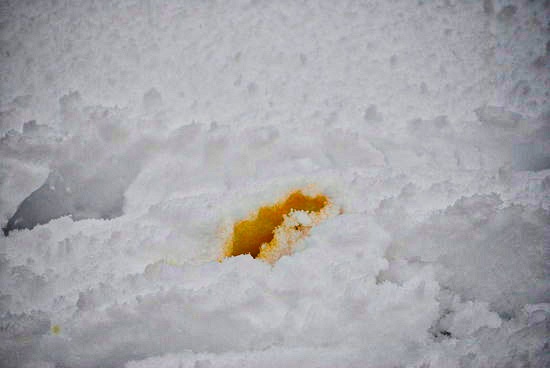
Posted By: Alex - Sat Aug 19, 2017 -
Comments (0)
Category: Animals, Experiments, Body Fluids

| Who We Are |
|---|
| Alex Boese Alex is the creator and curator of the Museum of Hoaxes. He's also the author of various weird, non-fiction, science-themed books such as Elephants on Acid and Psychedelic Apes. Paul Di Filippo Paul has been paid to put weird ideas into fictional form for over thirty years, in his career as a noted science fiction writer. He has recently begun blogging on many curious topics with three fellow writers at The Inferior 4+1. Contact Us |




